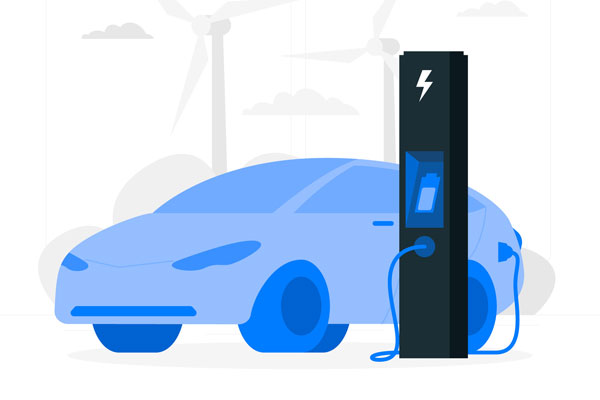Electrical vehicles are poised to dominate car markets

[Inside of an Electrical Vehicle. Photo Credit to Freepik]
A week ago, I was fortunate enough to get an opportunity in my school to learn about the future of electric vehicles in a workshop lectured by a few Stanford students.
We were introduced to the differences between EVs (Electric Vehicles) and gas-powered vehicles and why we need to participate in the transition to electricity-run cars.
We were also taught that CO2 emissions are caused by gas-powered cars contributing to climate change, and we must replace these sources with clean and renewable energy.
As the legislation in California passed Senate Bill 100 in 2018 mandating all cars manufactured and sold in 2035 and beyond to be zero-emission vehicles, the energy transition to clean resources is a glimpse away.
For an interactive activity of the lecture, students were divided into groups to design the most cost-efficient EV in terms of storage size, range, manufacturing location, number of occupants, and battery size.
Although the design of the EV came out to be primarily based on one’s preference, the one that surprised me was the outcome of my choice of manufacturing location.
I initially chose to manufacture EVs outside of the US to lower the labor costs, but manufacturing EVs in the US would give you enough federal tax credits to make it cheaper to manufacture EVs in the US.
When my group calculated the total cost of the EV we just designed, we designed the most affordable EV out of all groups, mainly due to the range it had, which would last traveling from San Jose to San Francisco back and forth in one full charge.
Although the EV we designed had focused more on affordability to owner usability, we had assumed the target audience would be low-income families looking for a low price but sufficient for everyday use.
After the EV design activity, each group was tasked to calculate the average cost of gas and electricity for each gas vehicle and electric vehicle spent per year.
After some calculations, comparing the cost of gas vs. electricity yielded a surprising result: the total electricity bill spent on electric vehicles for a year was almost two times lower than the cost of gas spent on gas vehicles per year.
For people who focus on affordability when choosing a vehicle to purchase, it would be a clever decision to go for EV to not worry about rising gas prices as price changes in gas can be very dramatic and be a financial burden for many families.
Other than affordability but also for environmental-friendly purposes, because CO2 emissions of EVs are significantly lower than that of gas-powered vehicles, it would contribute to the transition to clean energy and help stop climate change, a big concern for everybody.
The experience of the EV workshop greatly enhanced my knowledge of why everyone should consider having an EV in terms of affordability and helping the planet.
It is only a matter of time before electric vehicles dominate the car market shortly.

- Kijoo Park / Grade 11 Session 1
- Branham High School

![THE HERALD STUDENT REPORTERS [US]](/assets/images/logo_student_us.png)
![THE HERALD STUDENT REPORTERS [Canada]](/assets/images/logo_student_ca.png)
